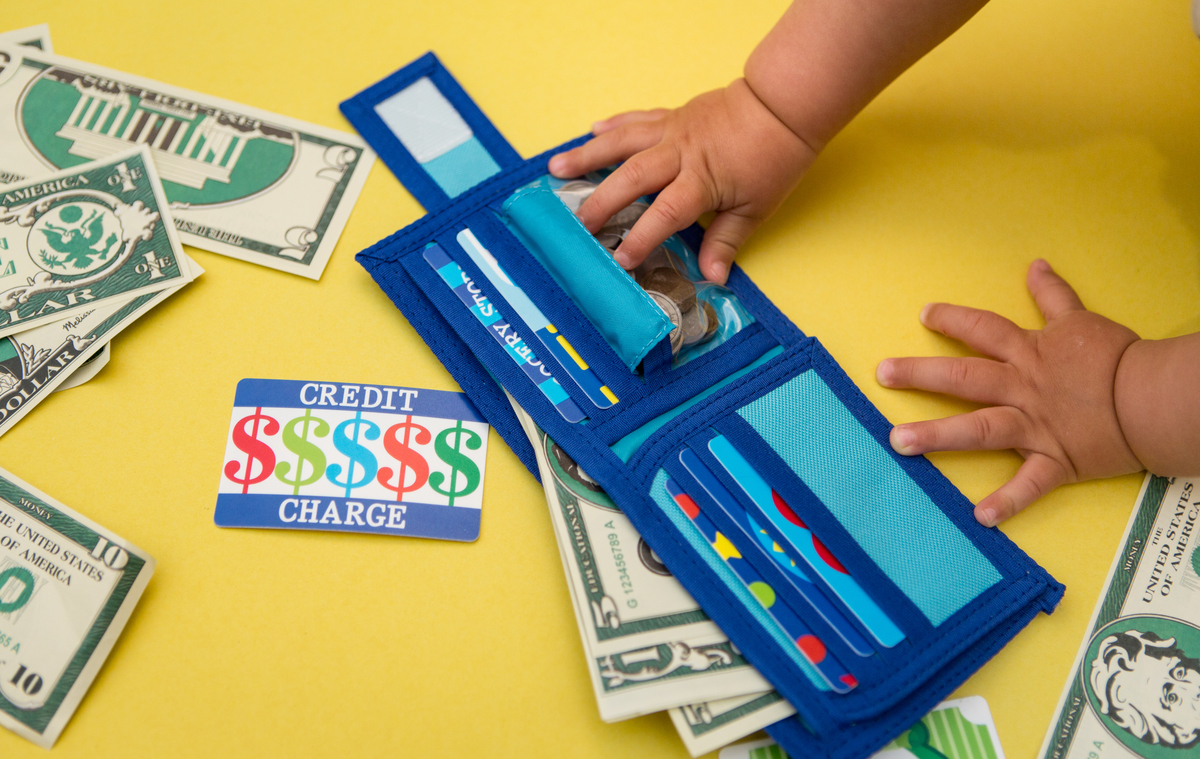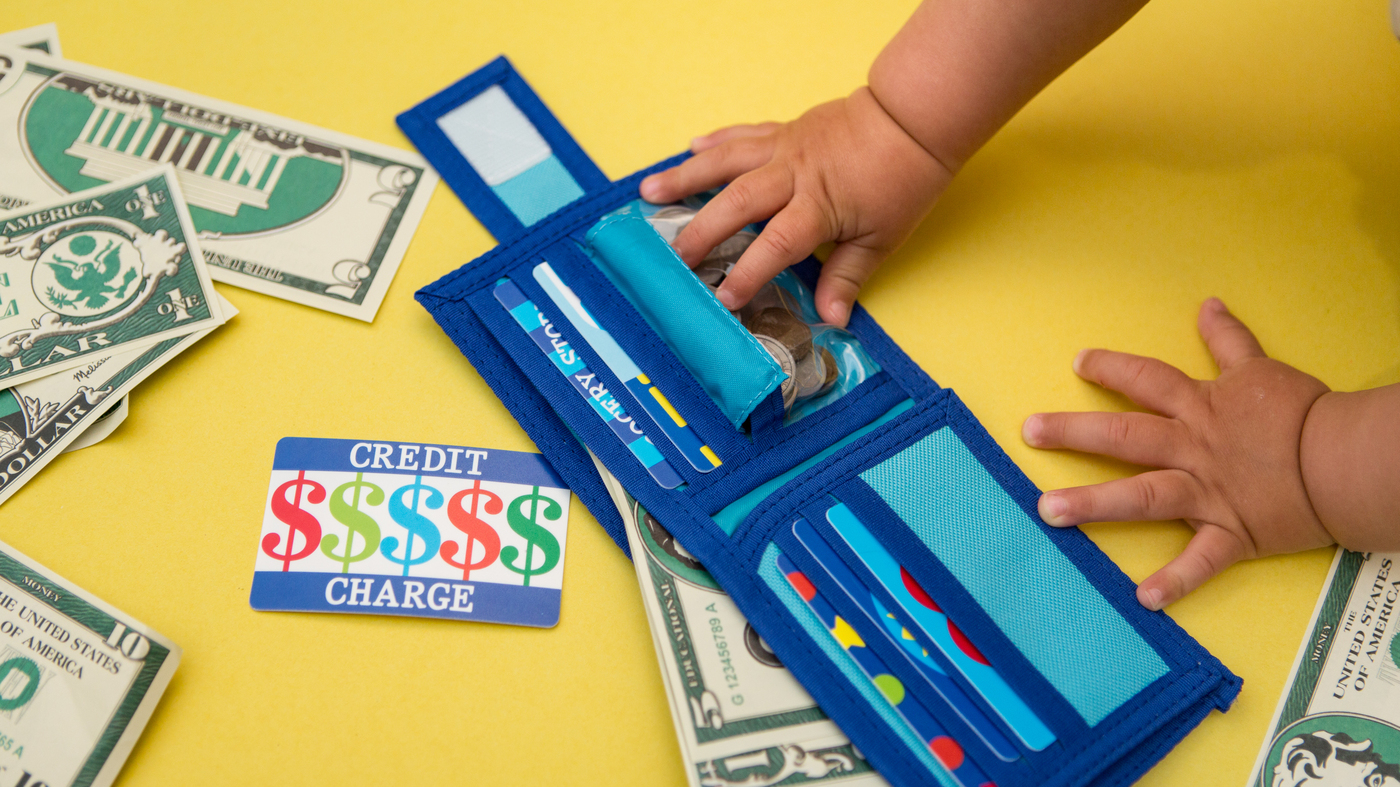How To Talk About Money As A Family: Life Kit: NPR
[ad_1]

Do you remember how you started learning money?
Set up a lemonade stand? Selling Girl Scout Cookies? Or maybe just watch how your parents handled household expenses?
Our upbringing significantly shapes our relationship to money, “because our children see and do everything we do,” says financial expert Jen Hemphill.

It’s a lesson she learned firsthand. When she was young, Hemphill’s family moved from Colombia to the United States and money was often tight.
“I didn’t ask my parents for money because they told me they didn’t have it,” she says. “I was that kid.”
Hemphill carried this ultra-frugal, “we can’t afford it” attitude into her adult life – until she realized how much this unique mindset was limiting her family’s ability to grow and thrive financially. Now as an accredited financial advisor and host of the Your dinero is important Podcasting helps Hemphill take control of their own money histories and helps parents find the best financial footing for their families.
Healthy budget thinking starts with teamwork, she says.
Read on for some of the top financial education tips for children and families from our interview with Hemphill, or click the link above to hear the full episode.
As a family, speak openly and often about money
Money can feel like a taboo subject in many households. Hemphill says the only way to shake off the awkwardness is to have regular family conversations about money that involve everyone in the household. Many parents may be inclined to keep younger children out of money conversations to protect them from difficult topics or money worries, but Hemphill says these conversations don’t have to be serious or scary.
“I always start by making money,” says Hemphill. “It can be anything from finding money on the street to resisting impulse spending when you’re on the move.”
Sharing positive money stories is an easy and casual way to help your family think about and discuss financial planning, says Hemphill. She suggests allowing time for a family talk at least once a month, where everyone can have a say and contribute to the family’s financial goals.

If you’re not sure what to discuss, Hemphill recommends this Money as you grow Consumer Financial Protection Bureau’s guide as a great resource for designing age-appropriate conversations.
Involving children of all ages in small steps of real-world financial decision making is another great way to keep the whole family active on the money. If you’re at the grocery store, says Hemphill, you could try giving your 5-year-old a chance to choose the bread you want to buy from several options, and then talk to the child about their reasons. Or if you go shopping back to school, you can do some price comparisons with your tween to help strengthen the child’s saving muscles.
An allowance is not a one-size-fits-all


The most important element in deciding on an allowance, says Hemphill, is remembering “you know your child best”. Don’t be influenced by your own childhood experiences or what your peers are doing. She has worked with parents who disagree with the financial value of essential household chores and with others who found an allowance a great motivator.
From there, parents should first look at their own budget and assess how much subsidy they can comfortably afford. In order to then decide on an age-appropriate offer, think about what your child needs money for and what goals you have set yourself with him. Because “when you are 5 instead of 13, the amount will be different, right?”
Once you have determined when, why, and how much, make sure the terms of the allowance are clear: is it tied to tasks, behavior, or none? Do the children have to save a certain amount? Could you offer older children more pocket money and then hold them responsible for buying some of their necessities for themselves?
Pocket money can be a powerful learning tool, says Hemphill, because it gives your child the ability to manage their own money and you still have to run it when they fail.
“Make these mistakes early on so that you can discuss the ‘OK, what could have been done differently, and how would that have been better for you if you had done it’. ‘ “says Hemphill.
Start saving as early as possible


Saving is the most important financial habit to instill early on, advises Hemphill.
If you can make saving an integral part of life at a young age, she says, it’s “a breeze” when it’s time for her to fly the barn. You can start with toddler kids, says Hemphill, by using a good old-fashioned piggy bank!

She suggests giving it a try give-save-spend Bank that can be a fun and easy tool for even the youngest ones to think about goal setting and help others. Then, when your child gets birthday money or monthly allowance, talk to your child about how best to divide the dough. If you want to push your savings goals even further, you can encourage your children to always put 20% of their new income into their savings slot, says Hemphill.
As children get older or show interest, consider getting one child-friendly bank account. Hemphill Advises Shopping: Look for banks that waive certain fees or don’t have a standard minimum balance. When you’ve found the right thing, she suggests taking your child to the bank with you, if possible, to open an account together and cash in on this educational moment.
Don’t wait – it’s never too late


When parents lack confidence or control over their own financial situation, they may be less willing to talk to their children about money. But if you wait until your finances are perfect before teaching kids about money, “you’re doing your child a disservice”.

Children are influenced by parents’ financial decisions, whether or not you include them in the conversation, Hemphill points out. By making your money decisions transparent instead of leaving your children in the dark, you will better prepare them for success by helping them understand the power of money and providing opportunities to learn from your mistakes together.
“The very act of talking about it creates confidence,” says Hemphill. So don’t worry if your financial life gets a little out of line or if you haven’t had good money habits with your kids from the start. “It’s never too late. A lot of adults have never talked to their parents about money, have they?”
You don’t have to be perfect, Hemphill reminds us – you just have to start the conversation.
The audio portion of this episode was produced by Andee Tagle with technical assistance from Neil Tevault.
We’d love to hear from you. If you have a good life hack leave us a voicemail at 202-216-9823, or email us [email protected]. Your tip could appear in one of the next episodes.
If you love Life Kit and want more, Subscribe to our newsletter.
[ad_2]

